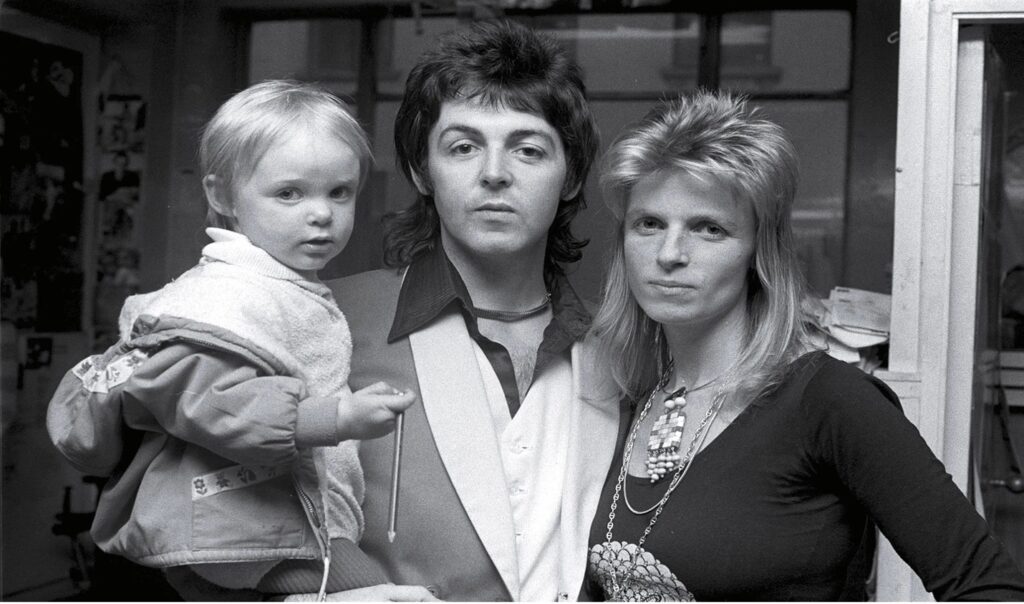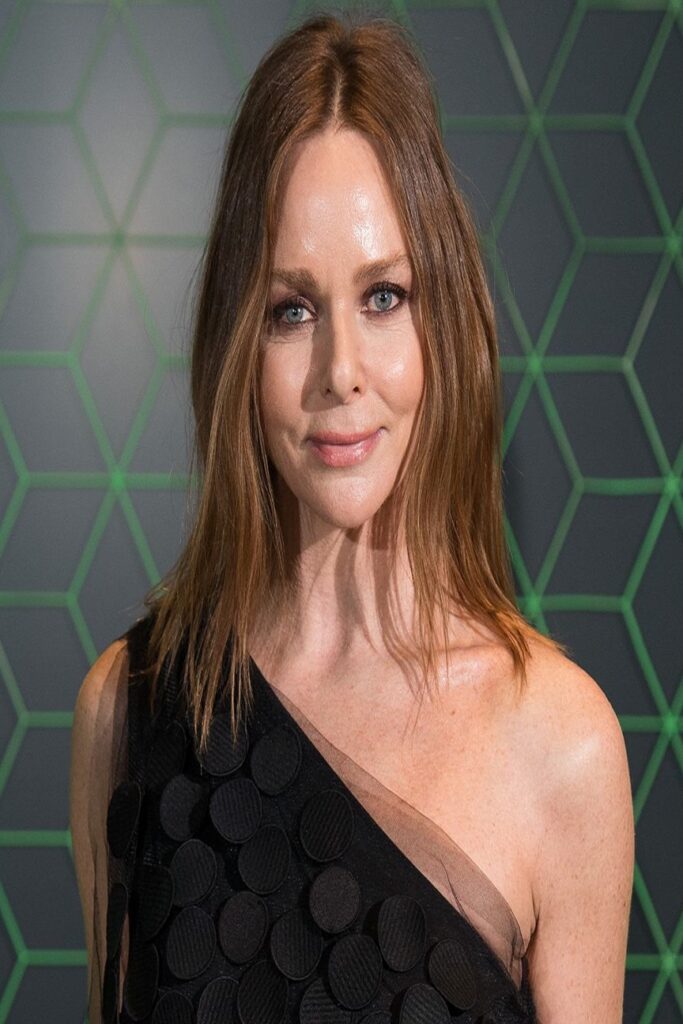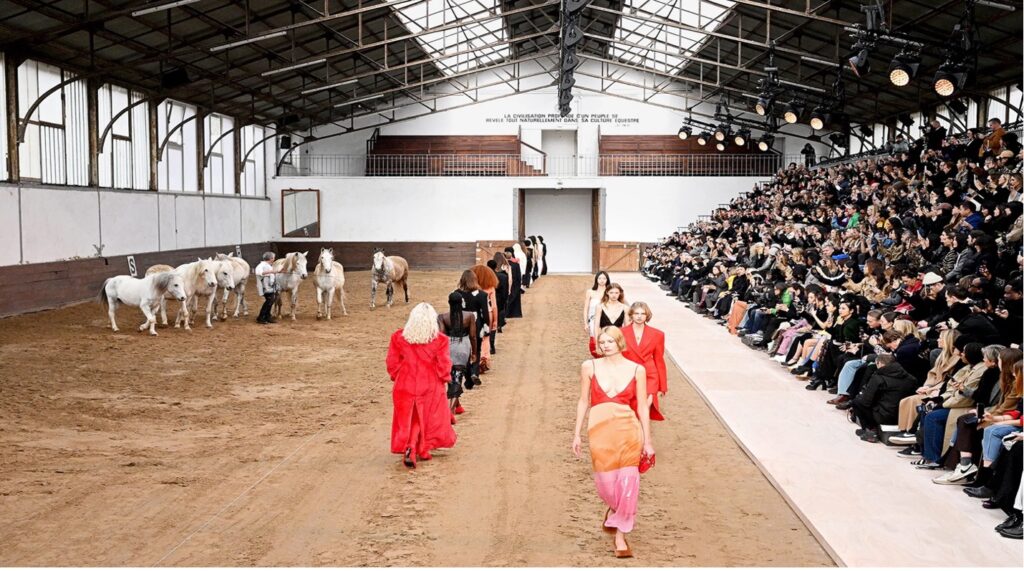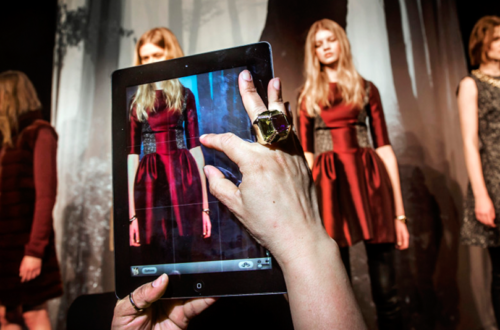Relying on her British take on modern femininity and tailoring to found an internationally acclaimed 23-year-old brand, Stella McCartney is arguably one of the fashion industry’s leading female designers.

Born in 1971, McCartney’s life has always been frantic and eccentric. Daughter of the music royalty couple composed by the Beatle Paul McCartney and the photographer Linda Eastman, the stylist spent her early life bouncing from the idle rural life of their Scottish farm, to the recklessness of the Wings’ (her parents’ band) road tour. Both extrema profoundly inspired the perceptive spirit of the young Stella, who identifies the “glittery boots and glamour” seen on stage as an early spark to her passion for fashion. On the other hand, horse-riding in Scotland and hiking trails in Arizona, taught her to respect nature in all its forms. In these regards, her parents’ prominent animal-rights activism steered their daughter in the direction she has never left ever since.
McCartney entered the fashion industry at 16, working as an intern for Christian Lacroix. After further fostering her tailoring skills at Edward Sexton’s in Savile Row, she graduated from Central Saint Martins College of Arts and Design in 1995. The runway of her final collection was walked by her supermodel friends, among which Kate Moss. “As one of the first nepo babies, I had the privilege of choice. I’m very aware of how lucky I’ve been to be accepted to work in this way since day one” states McCartney, looking back to her first job offer as creative director for Chloé in Paris. Despite the prejudices she had to face from the very beginning of her career, as demonstrated by the label “more clueless than couture” given her by her Chloé’s predecessor Karl Lagerfeld, McCartney always graciously yet tenaciously stuck to her ideas and values. Her first collection overthrew Chloé’s idea of discreet femininity by designing low-slung skintight pants, transparent gold-chain tank tops and skimpy sequin dresses, rigorously avoiding animal leather.
In 2001, Stella McCartney launched her own brand by showing her eponymous collection in Paris, in partnership with Kering. Today, the company controls 51 freestanding stores worldwide and her creations are distributed in over 77 countries. Nevertheless, McCartney’s work is increasingly reaching targets beyond her own label. After the publication of a 2006 U.N. Report showing how the livestock production generates more emissions than the global transport sector, the designer launched her Meat-Free Monday Campaign, alongside her father and her sister Mary, encouraging British to introduce a weekly meat-free day. The distinctive characteristic of this initiative was the intention of offering a sustainable and ethical lifestyle alternative, rather than condemning and disowning the “other way”. This constructive and appealing approach was inspired by her mother’s advertising strategy of her own vegetarian food business.

During the course of her career, McCartney has reached admirable heights. She has created the first ever vegan “It bag”: the slouchy faux-leather Falabella tote with a sleek silver chain trim, demonstrating that sticking to ethical values does not compromise aesthetic. Moreover, in the past few years she has discussed sustainability measures with world leaders at the G-7 and the U.N. Climate Change Conference. Additionally, she has co-founded $200 million Collab SOS fund for green solutions. In 2019, after teaming with LVMH, she was appointed special adviser on sustainability by the founder and CEO Bernard Arnault, since “she was the first one to put sustainability and ethical issues on the front stage, very early on”.
Often representing a pioneer for this fight in the industry, remaining coherent with her values has not always been easy or convenient. “I’ve had moments where I’ve been challenged very heavily to change my morals for the success of the company”, McCartney said alluding to the time when she was urged to introduce animal leather in her collection for improving margins. In 2021, Stella McCartney reported a loss of over $40 million, representing the third year of negative profits amounting to at least $38 million. However, her motives have never been more noble. In 2018, McKinsey calculated that the fashion industry generated more than 2 billion metric tons of greenhouse-gas emissions, amounting to the sum of British, French and German outputs altogether. Furthermore, around 60% of clothes produced ends up in landfills or incinerators after less than 12 months. Eventually, not only does the global leather industry slaughters more than a billion animals every year, but even the workers are exposed to toxic chemicals.
Subsequent to the worldwide success of collection lines high-boots and carry handbags made from apples, grapes and other plant-based materials, McCartney has discovered that, despite the significant reduction of the harm, caused to the global fauna, vegan fashion can still endanger the planet. Most faux-leathers involve the use of polyurethane and polyvinyl chloride, which release toxic microplastics into the environment. In order to find increasingly sustainable alternatives to such plastics, the whole Stella McCartney’s team is collaborating with startups. The cost of conducting similar research, however, is exorbitant, as is the amount of time spent to achieve results, possibly yielding to no feasible options. Nevertheless, sometimes the most unexpected resources can generate unexpected solutions. In April 2022, the brand produced the first-ever Mylo luxury bag, made from mycelium (the rootlike system of fungi). The winter 2023 collection includes a version of the Falabella made from Mirium, as well as over-the-knee boots created with Vegea, derived from wine-grape waste, and faux-crocodile handbags in AppleSkin, a by-product of juice and jam production.

Stella McCartney is an enlightened dreamer, who decided to actively exploit her fortunate position to fight for a major cause in an unprecedented fashion. The most exceptional and inspirational accomplishment of her career is the melodious harmony between environmental sustainability and customer desirability, while meeting the exacting standards of the luxury industry. The resilience and perseverance demonstrated throughout the years should signal the possibility for new and already established brands to maintain prestige and success in the field, while gradually pursuing the path for a more environmentally conscious approach to fashion.
By Giacomo Evangelisti
Sources:
https://time.com/6302562/stella-mccartney-sustainability-interview-lvmh/
https://www.businessoffashion.com/community/people/stella-mccartney
Images:
Michael Putland—Getty Images
Getty Images
Stephane Cardinale—Corbis/Getty Images





